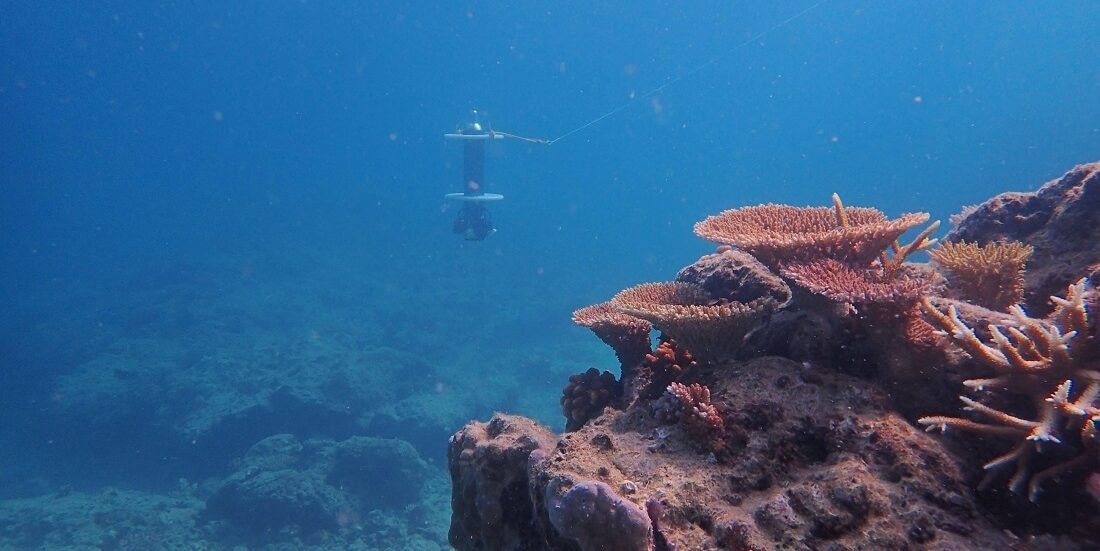
Developing simpler underwater robots can provide a lower threshold for continuously monitoring the marine environment: Here one of Oscar Pizarro’s prototypes is being tested at Lizard Island in the Great Barrier Reef, Australia. Image Credit: Oscar Pizarro, Norwegian University of Science and Technology.
These changes could be a result of natural variability but can also be linked to human activities like pollution, climate change, and the introduction of invasive species. Currently, Pizzaro is trying to map and track the seabed in the Arctic as well as the Norwegian coastline.
New Prototype with Promising Results
Pizarro is almost set to introduce an autonomous vehicle that charges below 100 000 NOK. This is comparatively far cheaper than the present subsea robots that have been utilized to map the ocean environment.
Can we scale up observations by making the robots cheaper and easier? Today when we use robots to study the environment it is a relatively complex undertaking, and requires expensive and rare resources like ships, trained people, and sophisticated machines. It becomes too expensive to collect enough data to really understand the environment.
Oscar Pizzaro, Senior Researcher, Norwegian University of Science and Technology
This newly developed autonomous subsea robot has been subjected to testing by Pizarro in Ny Ålesund Svalbard and Tautra in the Trondheim fjord. Here can be found the world’s shallowest coral reef present in cold water. The robot is still a prototype, but it looks optimistic.
“Pizarro is a pioneer in optical imaging of the seabed and has given huge contributions in photogrammetry, navigation, and picture processing,” Martin Ludvigsen said. He is one of the managers of the AUR-Lab (Applied Underwater Robotics Lab) and a scientist at NTNU AMOS (Autonomous Marine Operations and Systems).
Ludvigsen points out, “With cheaper prototypes we can have more robots and risk a bit more with them.”
Mapping of Our Ocean Is Needed
NTNU has offered Pizarro research grants for around 2.5 years to map the marine environment in the Arctic, Mjøsa, Trondheim fjord, and various other places.
Using Pizarro’s earlier work, high-resolution, three-dimensional visual maps of the seabed in Australia and other parts of the world have been made on several scientific expeditions.
This work has been used by marine scientists and especially marine ecologists. Single images don’t cover much ground, but if you combine many, you give a picture of the conditions on the seafloor, you see patterns at broader scales yet still at high resolution.
Oscar Pizzaro, Senior Researcher, Norwegian University of Science and Technology
In AMOS, the researchers have been planning to take this ocean research to a higher level.
Pizarro has been mesmerized by the observational pyramid that NTNU AMOS is developing; ocean observation is where one tends to map areas with the help of small drones, satellites, and autonomous vessels both on the surface and beneath the water.
By using an observational pyramid, we can get a lot more data. This could help plan the deployments of these simple robots and complement the observational pyramid with new observations.
Oscar Pizzaro, Senior Researcher, Norwegian University of Science and Technology
World-First Seafloor Monitoring Program With Robots
When Pizzaro started his work in Australia, the Field Robotics Center’s undersea focus was comparatively new. The potential to revisit sites accurately enables marine researchers to directly note environmental changes following events like coral bleaching caused by heatwaves.
Pizzaro stated, “We did this research with a group of fantastic students and some talented engineers and turned it into an operational seabed observation and monitoring program around Australia.”
Over yearly or two-yearly repeated observations, one can observe changes in the seafloor and how various species grew, died, and if they shifted.
Pizzaro stated, “This research goes on, but as an operational monitoring program, and there is less room for big changes. I want to develop new robots that can observe the ocean environment even better and see how we can collect data in cheaper and more efficient way. NTNU and Trondheim are a hub of research and innovation in marine technology, so it seems like a great place to make big advances.”